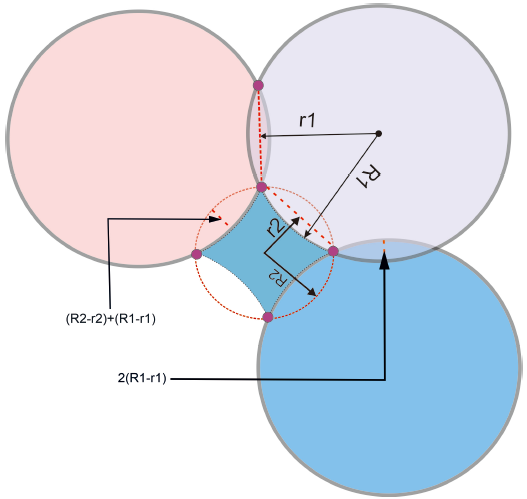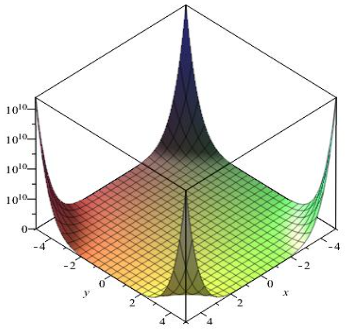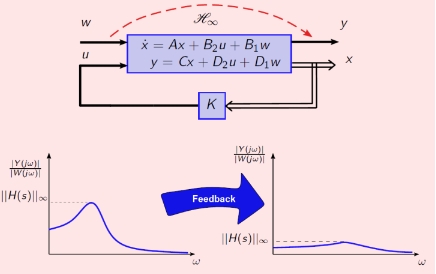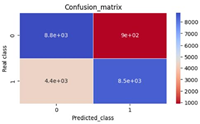Mathematical analysis of epidemic model to assess the impact of lockdown on COVID-19
Abstract
Covid-19 and its variants, have been a worst pandemic, the entire world has witnessed. Tens of millions of cases have been recorded in over 210 countries and territories as part of the ongoing global pandemic that is still going on today. In this paper, we propose a SEI mathematical model to investigate the impact of lockdown to the controlling and spreading of infectious disease COVID-19. The epidemic model incorporates constant recruitment, experiencing infectious force in the latent period and the infected period. The equilibrium states are computed. Under some conditions, results for local asymptotic stability and global stability of disease-free and endemic equilibrium are established by using the stability theory of ordinary differential equations. It is seen that when the basic reproduction number , the dynamical system is stable and diseases die out from the system and when , the disease persists in the dynamical system. When , trans critical bifurcation is appeared. The numerical simulations are carried out to validate the analytical results.
References
[1]WHO. Coronavirus disease (COVID-19). Available online: https://www.who.int/docs/default-source/coronaviruse/situation-reports/20201005-weekly-epi-update-8.pdf (accessed on 13 June 2023).
[2]Atalan A. Is the lockdown important to prevent the COVID-19 pandemic? Effects on psychology, environment and economy-perspective. Annals of Medicine and Surgery 2020; 56(3): 38–42. doi: 10.1016/j.amsu.2020.06.010
[3]Sabir Z, Alnahdi AS, Jeelani MB, et al. Numerical computational heuristic through Morlet wavelet neural network for solving the dynamics of nonlinear SITR COVID-19. CMES-Computer Modeling in Engineering & Sciences 2022; 131(2): 763–785. doi: 10.32604/cmes.2022.018496
[4]Iqbal S, Baleanu D, Ali J, et al. Fractional analysis of dynamical novel COVID-19 by semi-analytical technique. CMES-Computer Modeling in Engineering & Sciences 2021; 129(2): 705–727. doi: 10.32604/cmes.2021.015375
[5]Gong L, Zhang X, Zhang L, Gao Z. Predicting genotype information related to COVID-19 for molecular mechanism based on computational methods. CMES-Computer Modeling in Engineering & Sciences 2021; 129(1): 31–45. doi: 10.32604/cmes.2021.016622
[6]Kucharski AJ, Russell TW, Diamond C. Early dynamics of transmission and control of COVID-19: A mathematical modelling study. Lancet Infectious Diseases 2020; 20(5): 553–555. doi: 10.1016/S1473-3099(20)30144-4
[7]Rafiq D, Suhail SA, Bazaz MA. Evaluation and prediction of COVID-19 in India: A case study of worst hit states. Chaos, Solitons and Fractals 2020; 139(4): 110014. doi: 10.1016/j.chaos.2020.110014
[8]Adekola HA, Adekunle IA, Egberongbe HO, et al. Mathematical modeling for infectious viral disease: The COVID-19 perspective. Journal of Public Affairs 2020; 20(4): e2306. doi: 10.1002/pa.2306
[9]Mahajan S, Raina A, Gao XZ, Pandit AK. COVID-19 detection using hybrid deep learning model in chest X-rays images. Concurrency and Computation: Practice and Experience 2022; 35(5): e6747. doi: 10.1002/cpe.6747
[10]Rehman AU, Singh R, Agarwal P. Modeling, analysis and prediction of new variants of COVID-19 and dengue co-infection on complex network. Chaos, Solitons & Fractals 2021; 150(5): 111008. doi: 10.1016/j.chaos.2021.111008
[11]Vermaand P, Kumar M. Analysis of a novel coronavirus (2019-nCOV) system with variable Caputo Fabrizio fractional order. Chaos, Solitons & Fractals 2021; 142(3): 110451. doi: 10.1016/j.chaos.2020.110451
[12]Biswas SK, Ghoshand JK, Sarkar S, Ghosh U. COVID-19 pandemic in India: A mathematical model study. Nonlinear Dynamics 2020; 102(1): 537–553. doi: 10.3934/mbe.2018061
[13]Misra AK, Rai RK, Takeuchi Y. Modeling the control of infectious diseases: Effects of TV and social media advertisements. Mathematical Biosciences & Engineering 2018; 15(6): 1315–1343. doi: 10.3934/mbe.2018061
[14]Asamoah JKK, Owusu MA, Jin Z, et al. Global stability and cost-effectiveness analysis of COVID-19 considering the impact of the environment: Using data from Ghana. Chaos Solitons Fractals 2020; 140(5): 110103. doi: 10.1016/j.chaos.2020.110103
[15]Tomar A, Gupta N. Prediction for the spread of COVID-19 in India and effectiveness of preventive measures. Science of the Total Environment 2020; 728(4): 138762. doi: 10.1016/j.scitotenv.2020.138762
[16]Li W, Deng X, Shao H, Wang X. Deep learning applications for COVID-19 analysis: A state-of-the-art survey. CMES-Computer Modeling in Engineering & Sciences 2021; 129(1): 65–98. doi: 10.32604/cmes.2021.016981
[17]Gosh JK, Biswas SK, Sarkar S, Gosh U. Mathematical modelling of COVID-19: A case study of Italy. Mathematics and Computers in Simulation 2022; 194(4): 1–18. doi: 10.1016/j.matcom.2021.11.008
[18]Giordano G, Blanchini F, Bruno R, et al. Modelling the COVID-19 epidemic and implementation of population-wide interventions in Italy. Nature Medicine 2020; 26(4): 855–860. doi: 10.1038/s41591-020-0883-7
[19]Dubey B, Dubey P, Dubey US. Role of media and treatment on an SIR model. Nonlinear Analysis: Modelling and Control 2015; 21(2): 185–200. doi: 10.15388/NA.2016.2.3
[20]Sales JH. Epidemic covid mathematical model. International Journal of Latest Research in Science and Technology 2020; 9(2): 1–5. doi: 10.29111/ijlrst-2019-10968
[21]Chowell G, Brauer F. The basic reproduction number of infectious diseases: Computation and estimation using compartmental epidemic models. In: Chowell G, Hyman JM, Bettencourt LMA (editors). Mathematical and Statistical Estimation Approaches in Epidemiology. Springer; 2009. pp. 1–30.
[22]Feng LX, Jing SL, Hu SK, et al. Modelling the effects of media coverage and quarantine on the COVID-19 infections in the UK. Mathematical Biosciences and Engineering 2020; 17(4): 3618–3636. doi: 10.3934/mbe.2020204
[23]Sharma N, Singh R, Pathak R. Modeling of media impact with stability analysis and optimal solution of SEIRS epidemic model. Journal of Interdisciplinary Mathematics 2019; 22(7): 1123–1156. doi: 10.1080/09720502.2019.1706839
[24]Driessche PVD. Reproduction numbers of infectious disease models. Infectious Disease Modelling 2017; 2(3): 288–303. doi: 10.1016/j.idm.2017.06.002
[25]Driessche PVD, Watmough J. Reproduction numbers and sub-threshold endemic equilibria for compartmental models of disease transmission. Mathematical Biosciences 2002; 180(1–2): 29–48. doi: 10.1016/S0025-5564(02)00108-6
[26]Liu Y, Cui JA. The impact of media coverage on the dynamics of infectious disease. International Journal of Biomathematics 2008; 1(1): 65–74. doi: 65–74. doi: 10.1142/S1793524508000023
[27]Pretz K. Using modeling to understand how COVID-19 preventive measures work: Washing hands, wearing masks: Does it help? IEEE Spectrum 2020; 57(10): 4. doi: 10.1109/MSPEC.2020.9205532
[28]Khan MA, Atangana A. Modeling the dynamics of novel coronavirus (2019-nCov) with fractional derivative. Alexandria Engineering Journal 2020; 59(4): 2379–2389. doi: 10.1016/j.aej.2020.02.033
[29]Garg A, Parashar A, Barman D, et al. Autism spectrum disorder prediction by an explainable deep learning approach. Computers, Materials & Continua 2022; 71(1): 1459–1471. doi: 10.32604/cmc.2022.022170
Copyright (c) 2023 Partha Karmakar, Krishna Pada Das, Satyajit Saha, Bhagabat Das, Rakesh Kumar

This work is licensed under a Creative Commons Attribution 4.0 International License.











